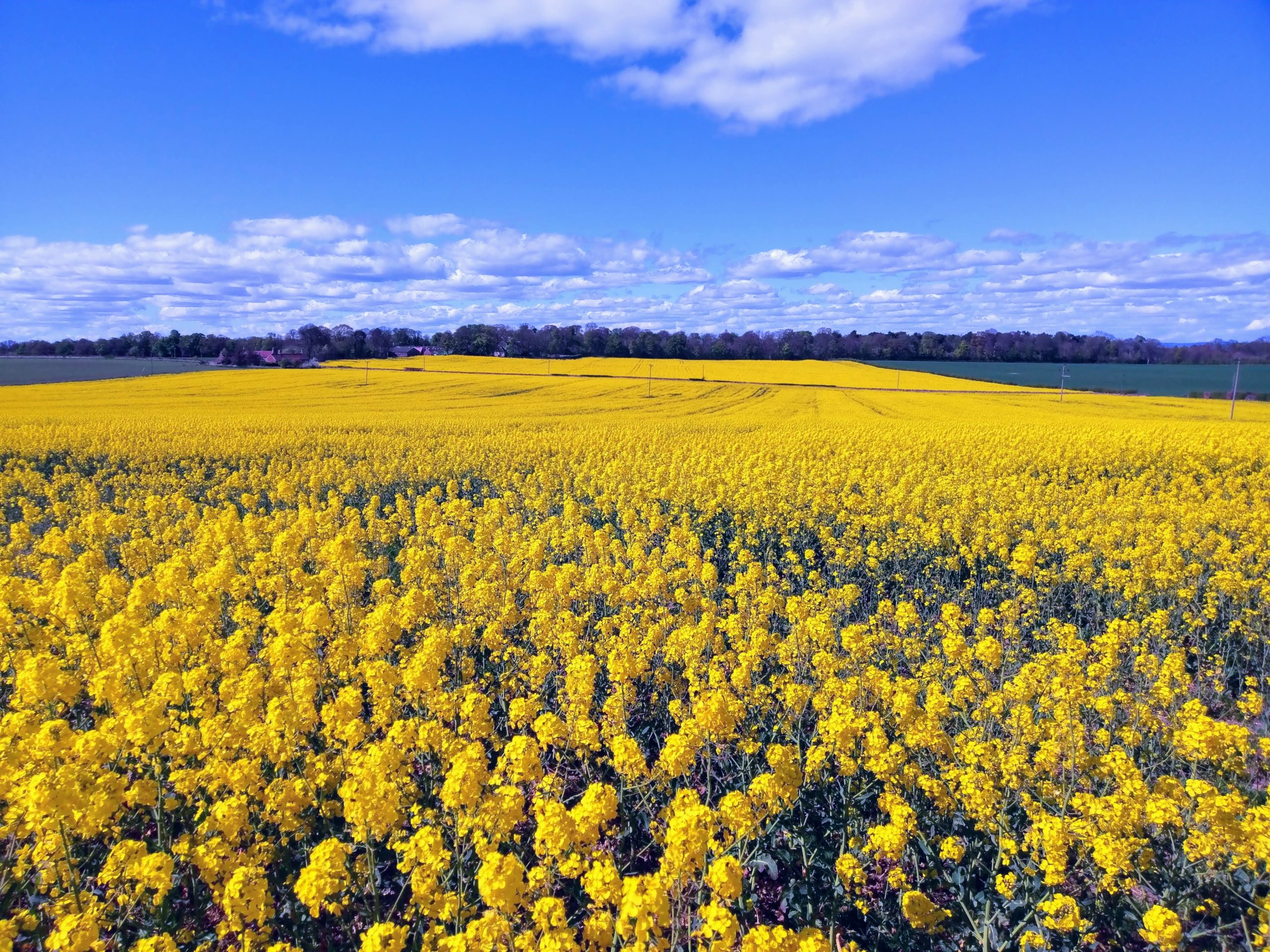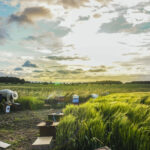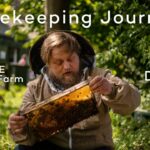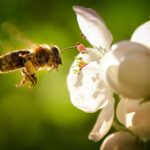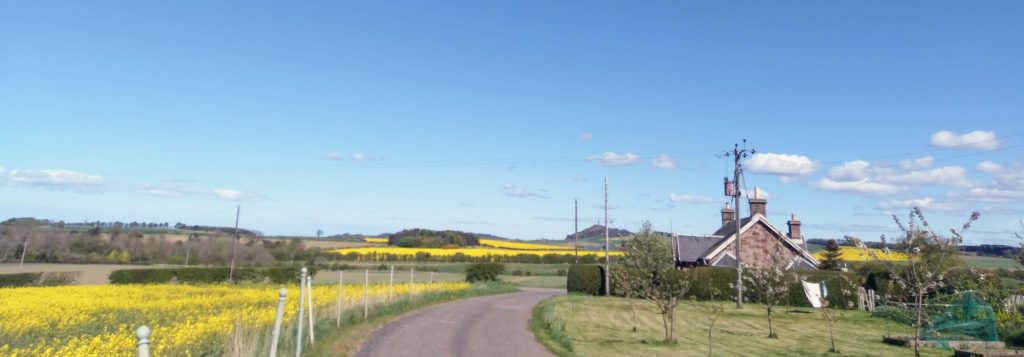
Spring is an amazing time of the year for beekeepers. After winter anxiety of will they make it, comes long awaited first inspection and then off to Rapeseed which is one of the first major forage for the bees in our calendar.
There were some snow drops and then dandelions at the apiary in Haddington but nothing can compete with 40 acres of brightly yellowed flowers to get the girls going.
You should see the excitement in the air, literally 😀
There is no fussing about, it is all hands on deck for the bees.
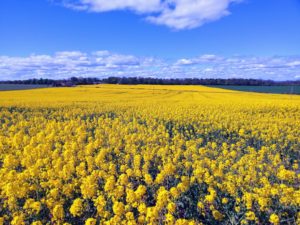
What happens in the colony?
A lot!
It is one of the most intense part of the year. Overwintered bees are in charge of both forage and nursing tasks as the queen has rapidly increased egg laying to up to 2000 eggs a day! Foragers are working like crazy to find ever so important pollen and some nectar to produce royal jelly and honey for first larvae and then pupa bees before they will wax them of for incubation.
Stages of Bee Development
Egg
The queen lays one egg per cell. Knowing what the colony needs to survive, the worker bees have built appropriate cells for the queen. In most of the cells, she lays a fertilised egg that will develop into a worker bee. In cells that are slightly larger than the worker cells, she lays unfertilised eggs that will grow into drones.
The egg stage of development lasts only three days.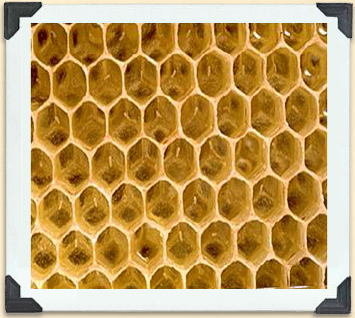
Larva
After three days, the egg hatches into a worm-like form called a larva. The worker bees feed the larva royal jelly for the first few days and then switch to honey and pollen. An exception to this is a future queen: this larva continues its diet of royal jelly. A larva eats almost constantly and grows quickly. Within just five days, it grows 1 500 times larger than its original size. At this point, worker bees cap the cell with wax and the larva spins a cocoon around itself.
The larval stage lasts about six days. It’s shorter for the queen, longer for the worker bees and longest for the drones.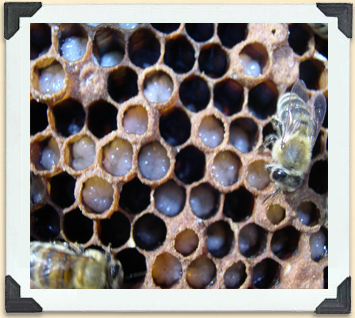
Pupa
In the pupa stage, the tiny organism hidden under the capping is starting to look like an adult bee. Its legs, eyes and wings develop and, finally, the little hairs that cover its body grow.
After seven to fourteen days in this stage, depending on the type of bee, the now adult bee chews its way out of the cell. This stage is shorter for the queen, longer for the worker bees and longest for the drones.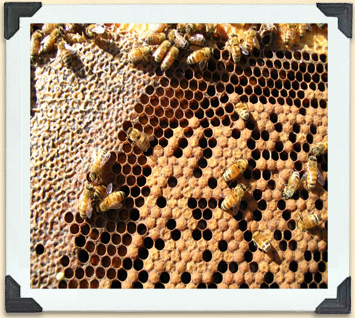
And here is a clip of a hatching bee from Longniddry apiary
Rapeseed Honey – creamy goodness
Rapeseed honey is an ugly duckling of honey world. It is neither runny for long time, actually it can crystallise even 2 weeks after extraction due to unusually high water content (21%) and very high levels of glucose with very little fructose and sucrose, which favourites formation of those large gritty crystals in honey, nor is it super aromatic and flavoursome.
But if you put in some time and effort the results are magnificent.
That is why we always cream our Rapeseed Honey to avoid the unpleasantness situation when you have to scrape honey which is rock solid and to bring out amazing texture and surprising taste as, when runny flavour is sharper and less pleasant..
The creaming process is a very prolonged and time consuming exercise due to the rhythm of work of the creaming machine. It churns honey with special paddles in a vessel every hour for 15 mins 24/7. To achieve perfect smoothness sometimes takes up to 2 weeks of this process and then a week of setting down for all the air bubbles of escape.
The results are worth the hassle.
The creamy sensation is irresistible and even a year after the honey retains a butter like texture
Here is a clip showing this process
What to do with it?
Well. it is up to you. We love it on toast!
Dugh?! – you might say. What else?
Replace icing sugar with it on carrot cakes or muffins.
Use it to make your own Nuttella by adding some cocoa powder and peanut butter. Consider is more of a sugar based spread that just awaits your ideas.
We use it in all of our fruity infusions as it does not overwhelm the added flavour and even highlights it as in our current batch of strawberry infusion.
We have found new supplier of freeze dried strawberry powder (fresh fruit frozen under low pressure, like in space. NASA’s idea) and the results are both colourful and very tasty.
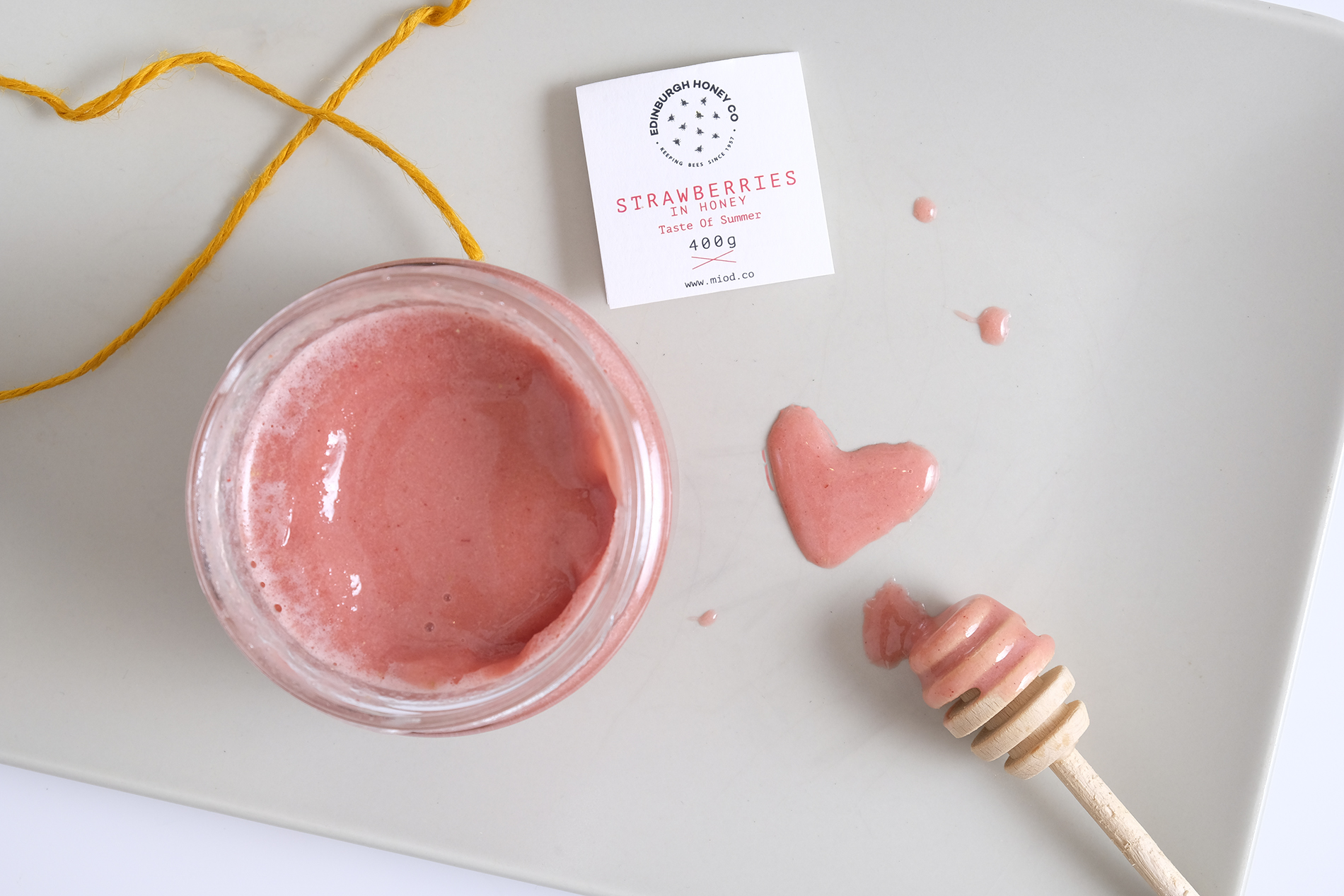
Lets us know what are your ideas by posting pictures of your creations on social media with #edinburghhoney or #rapeseedhoneychallenge
Thank you for reading. We hope that during those challenging times this wee lecture will bring you some escapism from everlasting lock-down.
Please share and help our little community grow.
Kind regards
Andy, Marta & the bees

